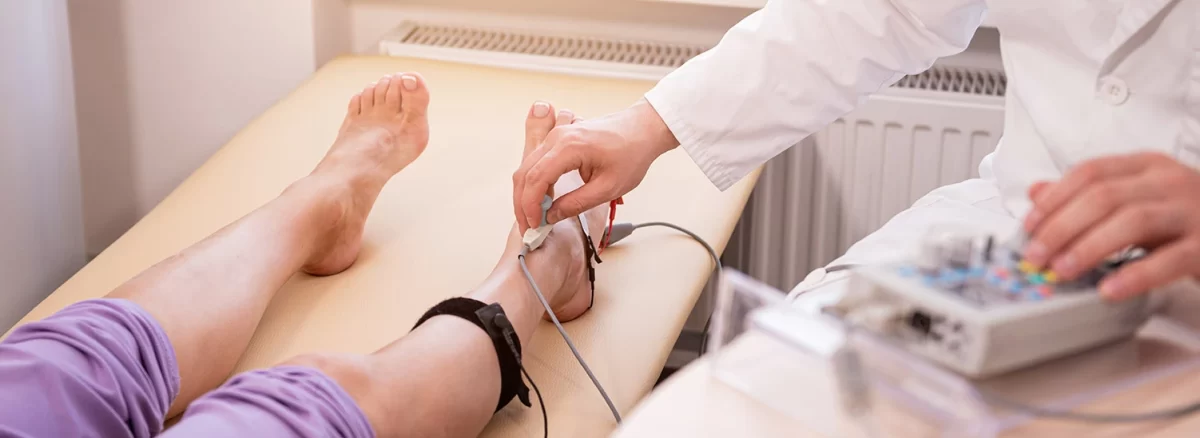Do you know what electromyography is and under what conditions does the doctor recommend this test for a person? What should we do to prepare for this test?
If a person has symptoms of muscle or nerve disease, such as numbness or unexplained weakness in the limbs, a doctor may order an electromyography or EMG test. EMG and NCV tests are safety methods of this test, each of which is performed according to the condition of the disease.
For this reason, in order to familiarize you more with this test, we will provide explanations regarding EMG, what to expect during the procedure, and how to prepare for this test. So stay with us.
What is electromyography?
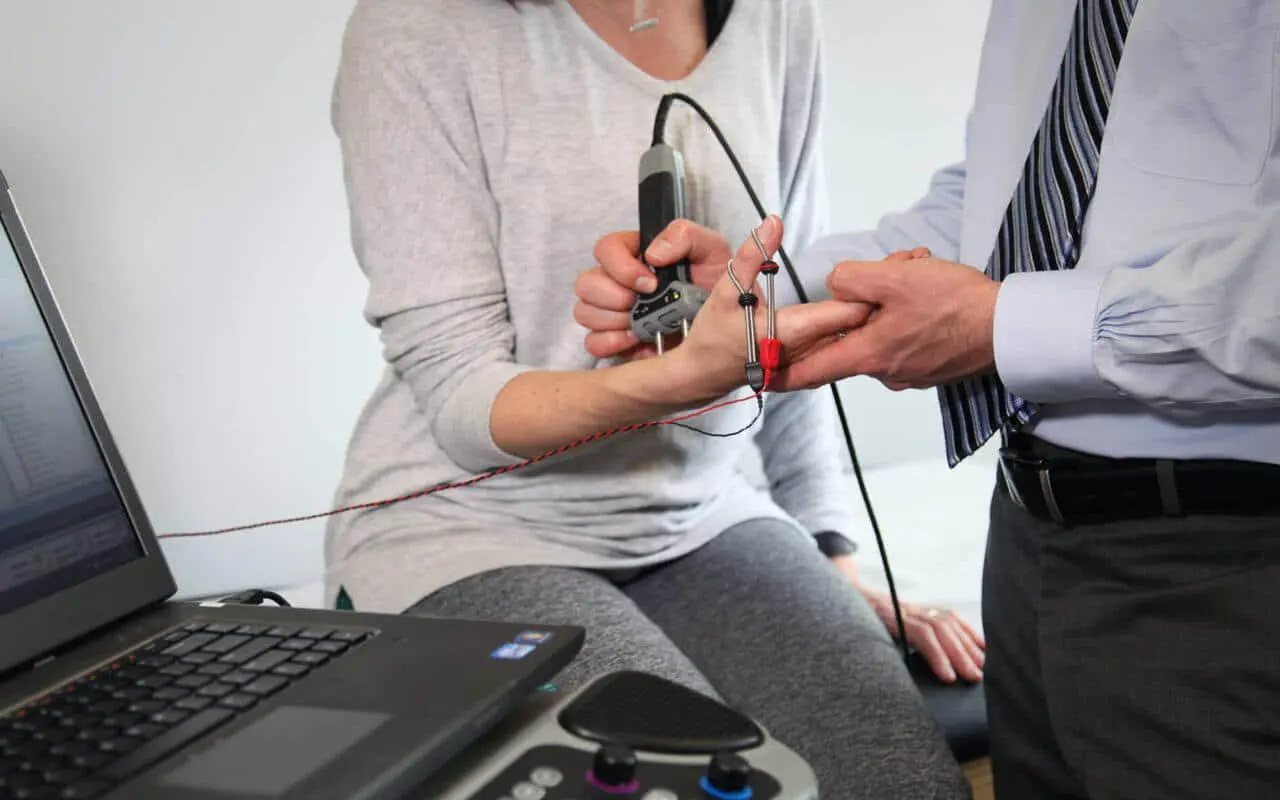
Electromyography is a type of diagnostic examination to find out the function of the body’s nerves. In fact, the transmission of messages between the brain and other body organs is carried out by a type of electricity generator that exists naturally in the body.
The transmission of messages inside the body has different types. Some of these transmissions are in the form of touch, pain, heat, pressure, and even other bodily sensations such as seeing and hearing. These messages are sent from the body to the brain through nerves.
It is also the same for doing daily activities such as moving hands, feet, or other organs. In these situations, a command is issued from the brain and sent to the organs by the nerves.
Nerves transmit these commands in the form of electrical waves. This process is similar to the operation of a telephone wire. When the nerve does not correctly send the message to the organs, the transmission of the electric wave message does not occur properly.
To record the intensity, speed, and other events and characteristics of electric waves that flow along the nerve, they use a method called an electrodiagnostic or EMG test.
✔️ Read More: What Is Physiotherapy? Benefits and Applications
Why should you use an electromyography test?
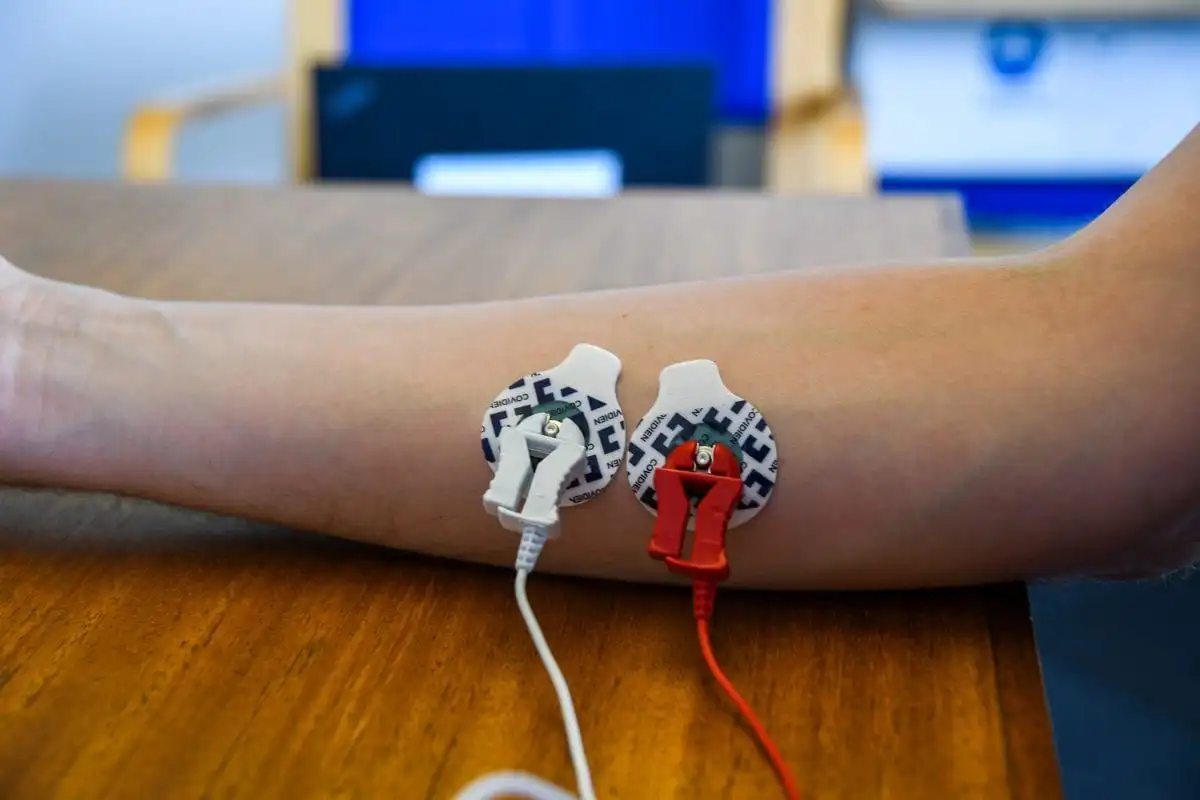
For several reasons, it is recommended to use EMG to treat certain diseases. These diseases include the following:
Diabetes
Diseases such as diabetes cause nerve inflammation in the body and cause disc-like symptoms. Disc surgery is not only ineffective but also worsens the disease. Therefore, examining EMG helps to differentiate between these conditions.
In addition to showing the severity of the injury, the EMG test also shows the location of the nerve involvement and helps the doctor to easily decide whether to treat the patient through surgery or try to help the patient with the same non-surgical treatments.
Keep in mind that you can find so many doctors in dubai wich will help you treat your diseas like this. They will also help you in treatment of Big Toe Arthritis and treatment of Toe Fractures in Dubai.
✔️ Read More: Haglund’s Deformity; How To Diagnose and Treat It
Neck and back disc lesions
Another reason is neck and back disc lesions. Undoubtedly, electromyography plays an essential role in the diagnosis and treatment of these problems. Also, patients can get rid of these problems by going to the clinic and doing the test.
For the EMG test, we can stimulate the nerve in one place to capture the sensory wave and then record the result on the skin.
This type of test is used in diseases such as carpal tunnel syndrome, nerve pressure syndrome in the wrist, sciatica examination, examination of the effect of diabetes on nerves, neck pain, and examination of nerve damage after blows to the body.
This test must be done by a specialist in physical medicine and neurological rehabilitation. There are so many doctors in dubai who will help with this problem. They can also help in treatment of Heel Pain and Treatment of Ankle Arthritis in Dubai.
What are the benefits of an electromyography test?

In general, EMG is effective in treating the following problems:
- Itching, numbness, and muscle weakness
- Muscle pain or cramps
- paralyzed
- Muscle disorders
- Involuntary muscle contraction
- Disorders related to the inability of neurons to send electrical signals to the target organ
- Radiculopathy
✔️ Read More: What Is a Ligament? Types of Ligaments and the Causes of Their Injury
How is the electromyography test performed?

This test consists of different stages, but it has 2 main stages, which are:
Electromyography
EMG is performed to evaluate various complications that can be caused by pressure on the nerve, especially in the arm, elbow, or wrist. To perform this test, a needle electrode is inserted into the muscle. Then the electrical activity of the muscle is recorded in this way. Doctors use the monitor screen and the sound of the wave to identify the type of wave created.
After placing the electrode, the doctor asks the patient to contract his muscles, first with a small amount and then with more degrees. In each of these states, special waves are produced. You may feel a little pain during the insertion of the needles into the skin, which will disappear soon. Also, after the needles are removed from the skin, their place may have a slight burning sensation for a few days.
If you use medicines that thin the blood, have lung disease, or if the risk of infection in your body is high, you should tell your doctor about these things before performing the EMG test.
Do not wear any cream or jewelry on the day of the test. Usually, the answer to the test will be given to you immediately after doing it.
Nerve Conducting Nervestudies NCS
This test is performed by a neurologist or physiotherapist. In this test, the doctor sends very fine needles through the skin into the target muscle to generate electrical waves. These waves are sent by the muscle to a special device. The device amplifies the collected electric waves and then records them.
In this method, the doctor may also place special adhesives in different parts of your skin. These points are in the way of the desired nerve. The metal piece is located under these adhesives, which are connected to the device by a wire. In fact, the function of these adhesives or electrodes is to collect electrical information from the surface of the skin.
The electromyography device injects a weak electric current into your skin through one of these electrodes. This current of electricity enters the nerve through the skin and moves along it. Then, in the path of the nerve, the next electrode receives and records the electric current. Then the device checks how much time it takes for the electric wave to travel from the first point to the second point. In other words, the conduction speed of electrical waves inside the nerve is checked.
This driving speed is usually around 200 km/h. This conduction speed may decrease when the nerve does not work well for any reason. By changing the location of the electrodes, the tester tries to discover the location of the nerve damage. When the electric current enters the skin from the first electrode, a slight electric shock is felt, which is not painful or annoying.
To measure the speed of nerve conduction, the nerve is stimulated at two points, and the distance between the two points is divided by the time traveled.
✔️ Read More: What Is a Tendon? Types of Tendons and the Causes of Their Damage
What are the applications of the electromyography test?

EMG is useful in the treatment of diseases such as:
- Carpal tunnel syndrome
- Thoracic outlet syndrome
- Ulnar nerve entrapment
- Pain caused by disc problems
- Numbness, tingling and numbness of the limbs
- Detection of pressure on nerve roots between vertebrae
Who should use the electromyography device?
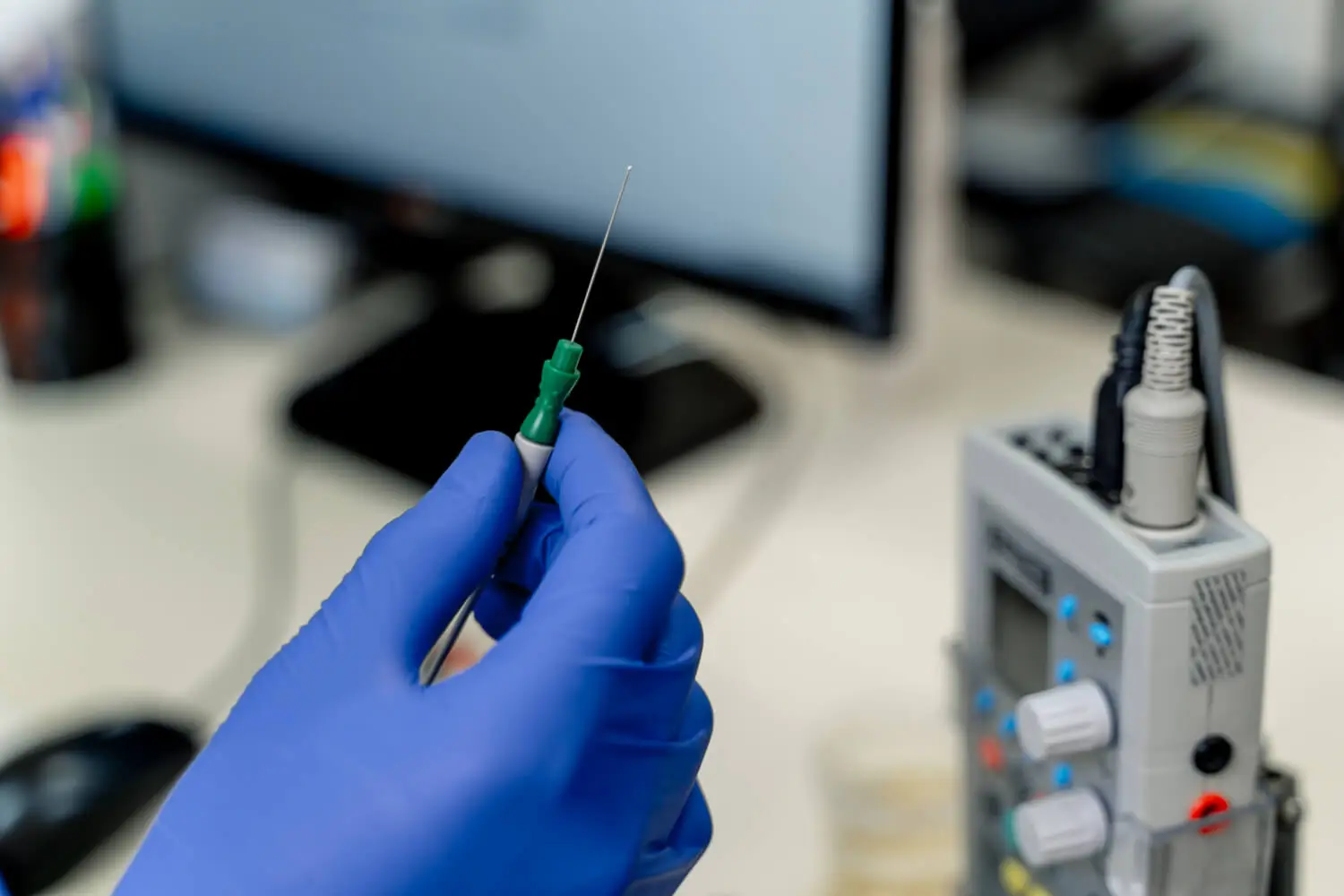
EMG devices are mostly used for people with musculoskeletal pain, such as long-term (chronic) back pain or knee arthritis. They are also often used to relieve pain in the early stages of labor.
Other uses include:
- Migraine headaches
- Period pains
- Sports injuries
- Non-painful conditions such as fatigue, insomnia, or dementia.
✔️ Read More: Joint peroneal nerve entrapment – diagnosis and treatment
Is the electromyography test dangerous?
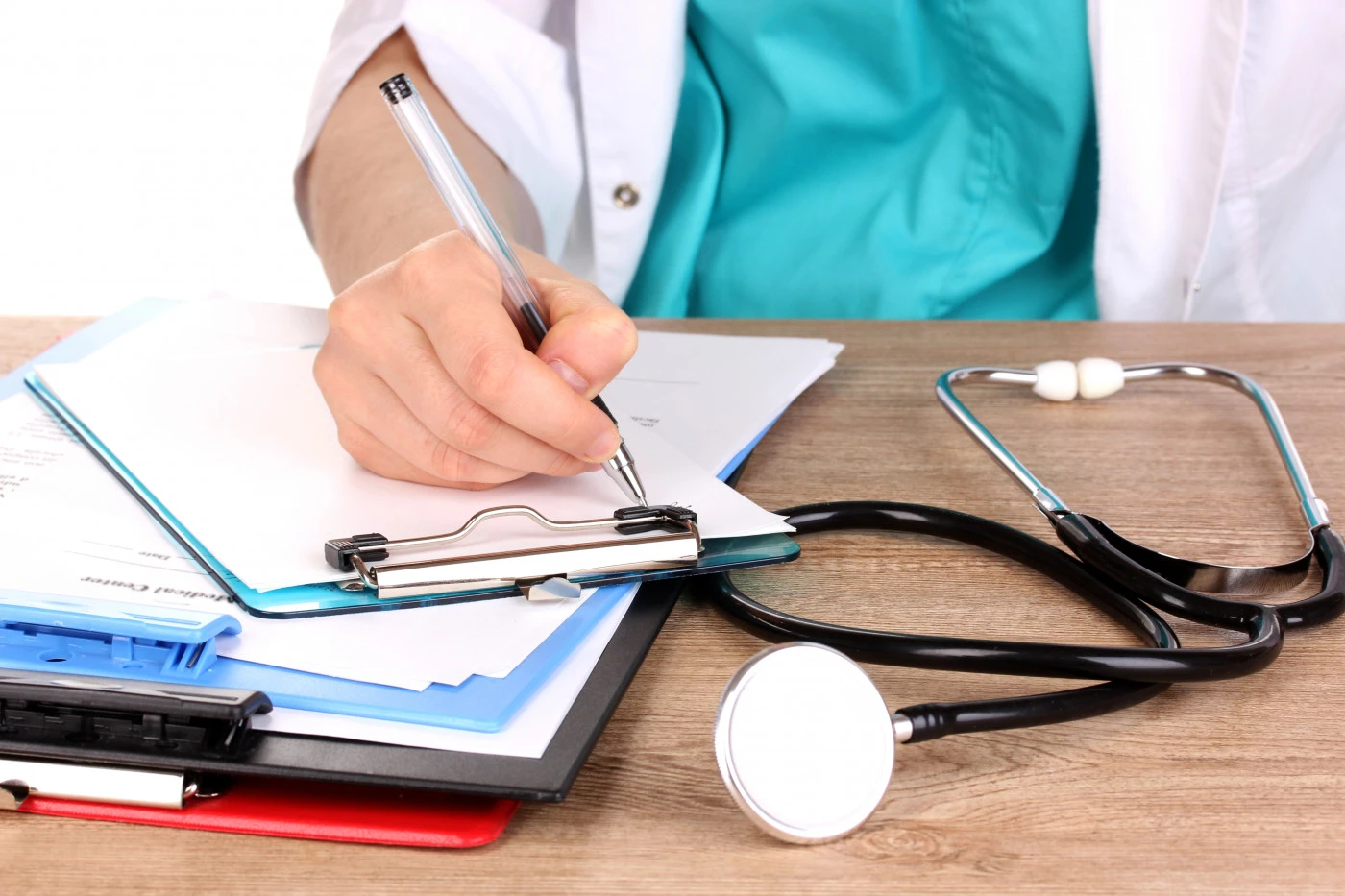
The risk of serious complications or side effects for EMG tests is very low. However, during or after the EMG test, many people experience nerve and muscle pain.
Resting and the use of over-the-counter pain relievers may help reduce muscle pain more quickly, but it usually resolves on its own within a few days. In rare cases, after a needle test, a person may experience soft tissue swelling (lymphedema) or a skin infection near the puncture site.
Tips for the electromyography test

Before doing this test, you should warm your hands and feet. Also, you need to remove metal objects such as bracelets or rings from your body and turn off electronic devices.
If you have infectious diseases such as AIDS, hepatitis, blood diseases, kidney and liver failure, or heart diseases, be sure to inform your doctor.
Inform your doctor if you are using blood thinners such as warfarin, heparin, or Plavix.
It is not particularly painful if EMG is performed by a skilled specialist and with quality needles. However, the placement of the needles may be a bit painful or burning.
This test has no complications, and all heart patients, pregnant women, and people who have metal in their body can use this method of treatment.
✔️ Read More: Examine the causes of flat feet and the best way to treat it!
FAQ
Is EMG or NCS painful?
In all patients, pain is the most common EMG complication elicited by nerve conduction or needle tests. This type of pain is usually well tolerated, but for some patients it is almost unbearable.
Before starting EMG, it is important to discuss and understand the pain. Because stopping in the middle of the test destroys the data of the patients, adds to their discomfort, and creates a challenge for EMG in interpreting the limited data.
The interesting point in this regard is that today, pharmacological interventions (such as skin sprays or oral painkillers) and non-pharmacological interventions (such as soothing music or providing preoperative information about the anxiety relief test) are used to relieve pain during EMG. .
How long does an electromyography test take?
Depending on the conditions and findings of the study, the EMG test usually takes between 30 and 90 minutes. A report is then sent to your doctor that includes the findings and interpretation.
If you see a neurologist, they will immediately check the results. However, if another healthcare professional performs the test, they will not see the results until a follow-up appointment with the neurologist is scheduled.
✔️ Read More: What does a hammer toe mean and how is it treated?
Conclusion
In this article, we tried to talk about the electromyography test. We elaborated on the purpose of this test, its benefits, risks, and how to do it. Now you know that this test is a minimally invasive method that health professionals use to diagnose and monitor muscle dysfunction.
In the end, if you have any questions about what EMG is, how much it costs, or other conditions, you can contact our specialists at the clinic.


